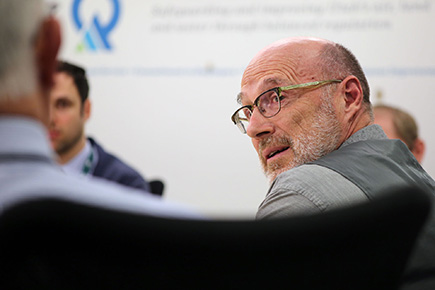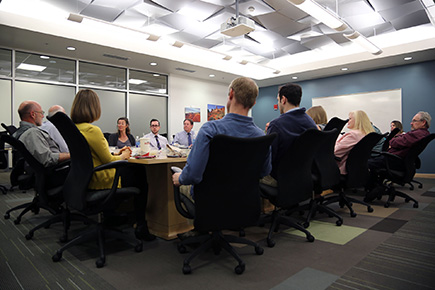

By Craig Anderson, Assistant Attorney General
The Attorney General’s Office (AGO) has provided legal support in environmental matters to the Utah Department of Environmental Quality (DEQ) since its inception in 1990.
Prior to 2012, the attorneys assigned to the Environment Division had offices at various locations in Salt Lake City. Before 2002, four attorneys were embedded with DEQ as “staff” attorneys hired to provide legal support to the Division of Environmental Response and Remediation, Division of Solid and Hazardous Waste and the Division of Air Quality. In 2002, the staff attorney positions were moved to the AGO based on a determination that the Attorney General is the sole legal counsel for the state.
An additional five attorneys in the AGO were housed at the Heber Wells building, and assigned to represent DEQ but were not co-located with the agency. The attorneys at Heber Wells did not interact with DEQ technical staff on a day-to-day basis. Following DEQ’s relocation to the Multi-Agency State Office Building (MASOB), the Executive Director requested that the attorneys in the Environment Division move to the MASOB. Based on this request, all the attorneys (Heber Wells and DEQ embedded attorneys), a paralegal, an administrative assistant and a law clerk moved into office space on the second floor of the MASOB. This consolidation of the attorneys was a significant change in the organizational culture of the Environment Division and noticeably improved the efficiency and delivery of legal services to DEQ.

A major reorganization of the Attorney General’s Office occurred in 2013. At that time, two separate Divisions represented DEQ (Environment Division, MASOB) and the Utah Department of Health (Health Division, Martha Hughes Cannon building). The divisions were consolidated to create the Environment/Health Division. The Environment/Health Division now consists of two sections, the Environment Section and the Health Section.
The Environment/Health Division is staffed by 15 attorneys, two paralegals, an administrative assistant and several law clerks. The work is managed by a Division Director and two Section Chiefs. The Section Chiefs are primarily responsible for making and monitoring assignments to the attorneys as requests for assistance are received from the agencies. The AGO represents executive branch agencies. The attorneys in the Environment Section represent DEQ as a legal entity acting through its duly authorized constituents – its officers, directors and employees. There is, however, no attorney/client relationship with a constituent in any individual capacity.
Although the attorneys in each of the Sections have specific subject matter expertise, there are legal matters common to both Sections, including: procurement, GRAMA, administrative hearings, board matters, public meetings, legislation and rulemaking. For this reason, the attorneys in the Division often share knowledge and resources in these areas. In addition, legal support is also provided to DEQ and UDOH by other divisions in the AGO, including the Litigation Division, Appellate Division, Investigations and State Agency Counsel. Legal support has been provided to DEQ from other divisions in specialized matters ranging from bankruptcy to tax.
In order to address concerns identified in a recent inspection audit report regarding “bottlenecks” and “uncertainty regarding the status of pending matters”, the Environment Section has proposed a new intake and review process. The elements of the intake process include: (1) a request for assistance — a clear articulation of the “who, what, when, where and how” relevant to the request; (2) the expectations on deliverables and level of effort for each assignment; (3) a priority for each request as among other pending assignments; and (4) the division directors will be responsible for resolving competing priorities.
A related management problem involves “drive-by” requests for advice either by phone, email or an office visit, where no significant background, context, or supporting documentation is provided (“what if a guy…?”). The problem with this approach is that an “off the cuff” answer or snap decision can come back to bite you and take even more time and resources. The proposed intake process will help to address the drive by the problem.
Other concerns relating the uncertainty about legal remedies and the enforcement process can only be addressed through training. For this reason, the Environment Section has proposed training for DEQ personnel. The training topics may include: legal processes, board functions, site access and inspections, enforcement, records requests, procurement and contracts.
The success of the proposed intake process and training will depend on the involvement and cooperation of each of the divisions in DEQ. The Environment Section invites the divisions to participate in further discussions regarding the implementation of the steps proposed to improve the delivery of legal services that support DEQ’s mission to safeguard and protect Utah’s air, land and water.

I am the Division Chief of the Environment & Health Division of the Utah Attorney General’s Office. We are housed on the second floor of the multi-agency office building. I have practiced law in Salt Lake City for 40 years. I am an active member of the American Bar Association and other professional associations. I travel frequently to attend conferences. My other interests include history, photography, classical music, and jazz.
